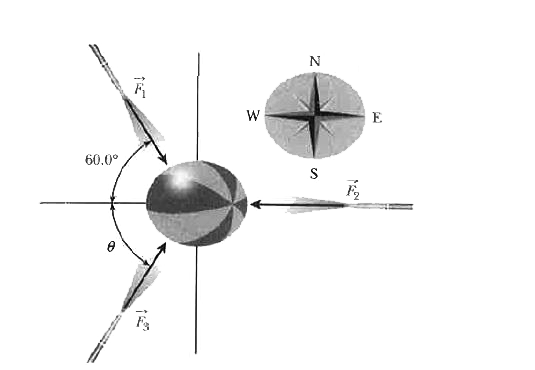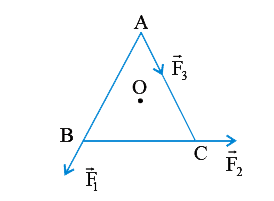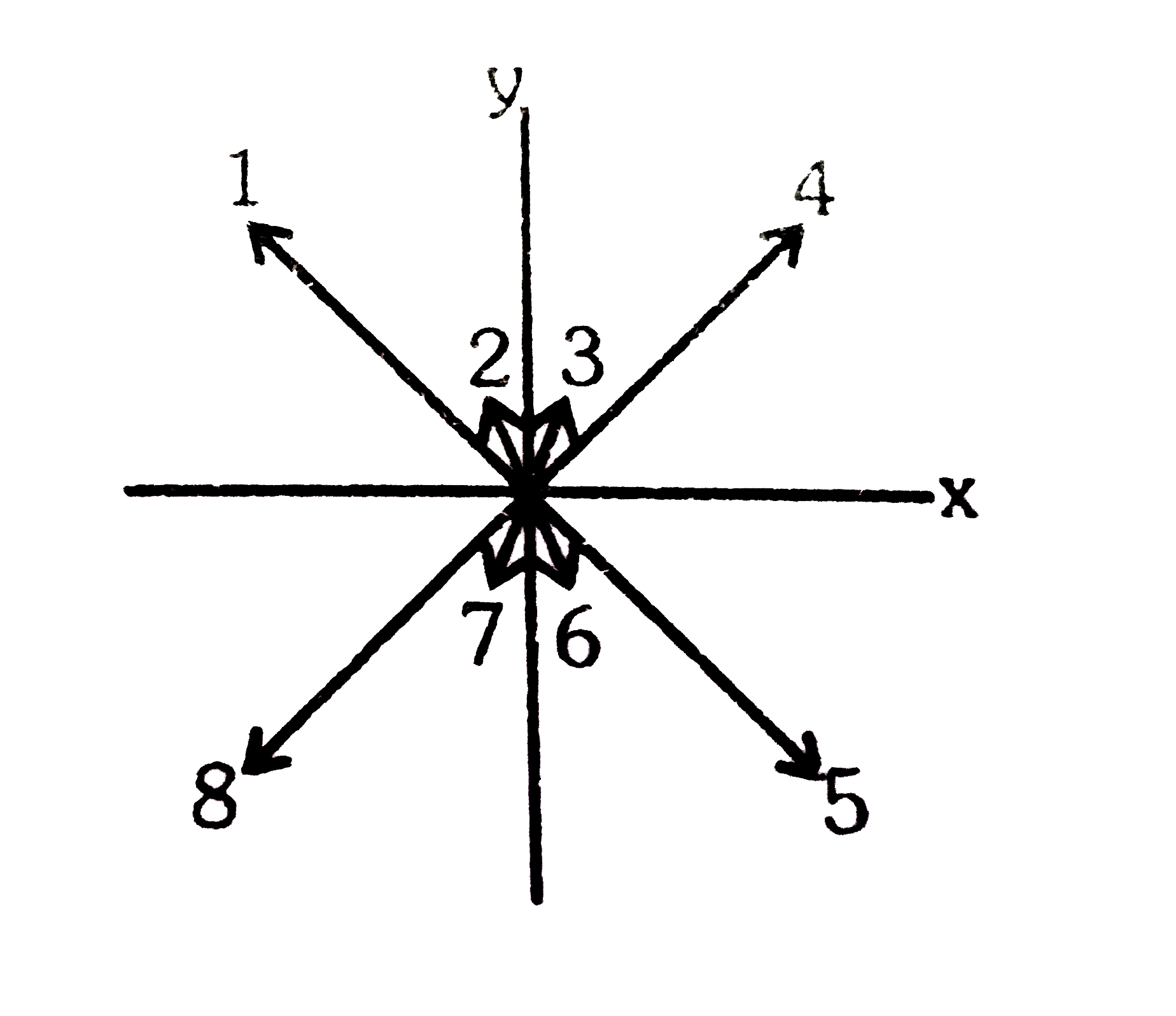A body is under the action of three forces →F1,→F2and→F3. In which case the body cannot undergo angular acceleration ?
−→F1,−→F2and−→F3 are concurrent
−→F1+−→F2+−→F3=0
−→F1,−→F2 is parallel to −→F3 but the three forces are not concurrent
−→F1and−→F2 act at the same point but −→F3 acts at different point.
The correct Answer is:A
Topper's Solved these Questions
- LAW OF MOTIONBOOK - NARAYNACHAPTER - LAW OF MOTIONEXERCISE - EXERCISE - I (C.W)(NEWTON.S LAWS OF MOTION)
8 Videos
- LAW OF MOTIONBOOK - NARAYNACHAPTER - LAW OF MOTIONEXERCISE - EXERCISE - I (C.W)(IMPULSE)
6 Videos
- LAW OF MOTIONBOOK - NARAYNACHAPTER - LAW OF MOTIONEXERCISE - EVALUATE YOURSELF - 5
8 Videos
- KINETIC THEORY OF GASESBOOK - NARAYNACHAPTER - KINETIC THEORY OF GASESEXERCISE - LEVEL-III(C.W)
52 Videos
- MATHEMATICAL REVIEW & PHYSICAL WORLDBOOK - NARAYNACHAPTER - MATHEMATICAL REVIEW & PHYSICAL WORLDEXERCISE - C.U.Q
13 Videos
Similar Questions
If three forces −→F1,+−→F2and−→F3 are represented by three sides of a triangle and −→F1+−→F2=−−→F3 , then these three forces are concurrent forces and satisfy the condition for equilibrium .
Statement II : A triangle made up of three forces →F1,→F2and→F3 as sides taken in the same order ,satisfy the condition for translatory equilibrium . In the light of the above statements ,choose the most appropriate answer from the options given below :
View SolutionThe resultant of the forces →F1=4ˆi−3ˆj and →F2=6ˆi+8ˆj is
View Solution
Knowledge Check
A body is at rest under the action of three forces, two of which are →F1=4ˆi,→F2=6ˆj, the third force is
A4ˆi+6ˆjB4ˆi−6ˆjC−4ˆi+6ˆjD−4ˆi−6ˆjThe resultant of the forces →F1=4ˆi−3ˆj and →F2=6ˆi+8ˆj is
A5√5B10ˆi−5ˆjC125D−2ˆi−3ˆjAt a picnic, there is a contest in which hoses are used to shoot water at a beach ball from three directions. As a result, three forces act on the ball, →F1,→F2and→F3 (see the drawing). The magnitudes of →F1and→F2=50.0NandF2=90.0N. Using the graphical technique, determine the angle such that the resultant force acting on the ball is zero.
 A21∘B26∘C34∘D39∘
A21∘B26∘C34∘D39∘
ABC is an equilateral with O as its centre →F1,→F2 and →F3 represent three forces acting along the sides AB, BC and AC respectively. If the total torque about O is zero then the magnitude of →F3 is :

View SolutionTwo forces →F1=(3N)ˆi−(4N)ˆj and →F2=−(1N)ˆi−(2N)ˆj act on a point object. In the given figure which of the six vectors represents →F1 and →F2 and what is the magnitude of the net forces

View SolutionTwo forces →F1and→F2 are acting at right angles to each other, find their resultant ?
View SolutionTwo forces →F1=(3N)ˆi−(4N)ˆj and →F2=−(1N)ˆi−(2N)ˆj act on a point object. In the given figure which of the six vectors represents →F(1) and →F2 and what is the magnitude of the net forces

View SolutionA body, under the action of a force →F=6ˆi−8ˆj+10ˆk acquires an acceleration of 1m/s2. The mass of this body must be:
View Solution
